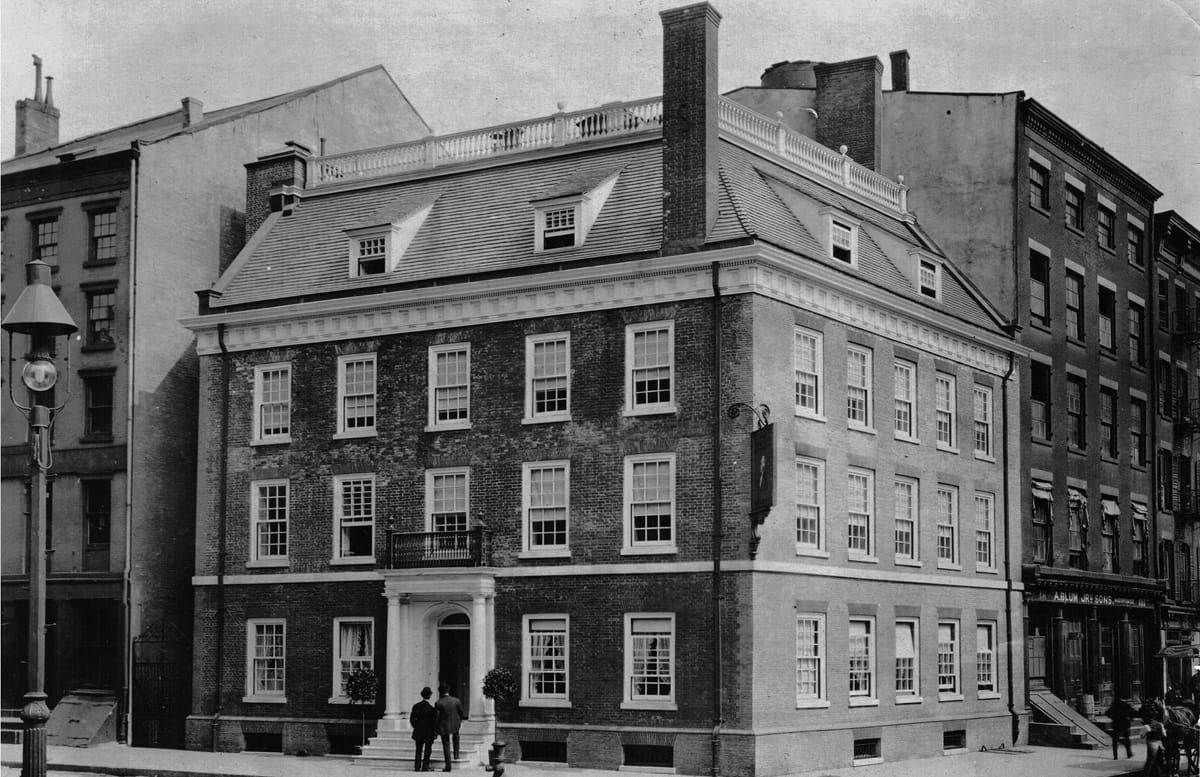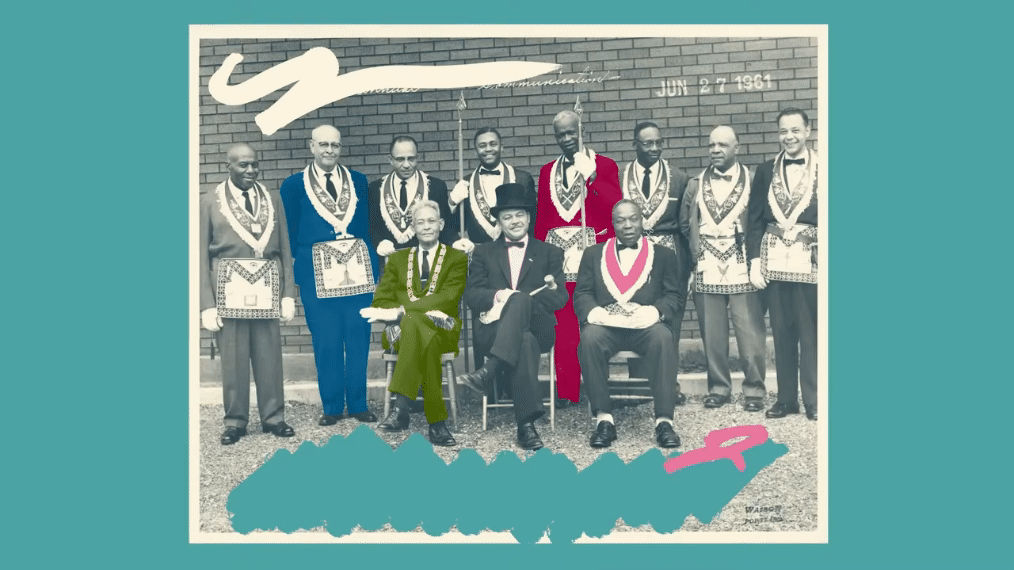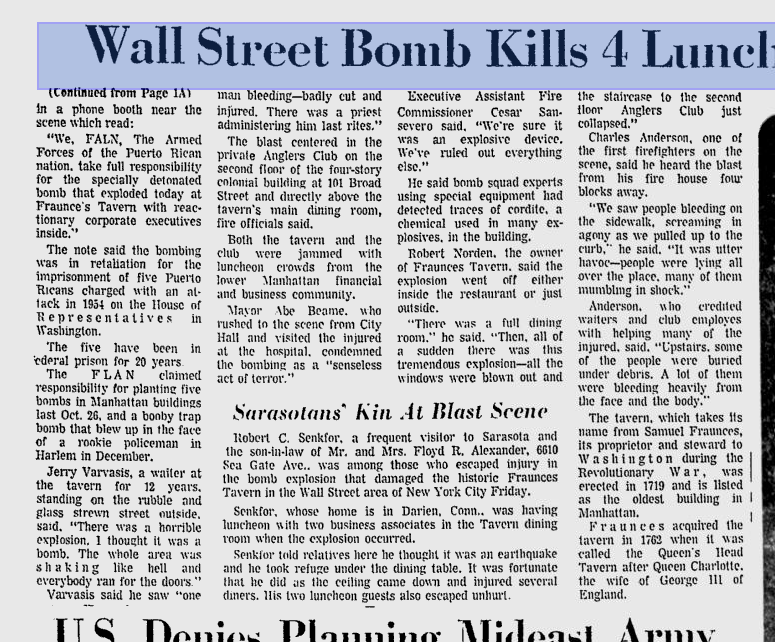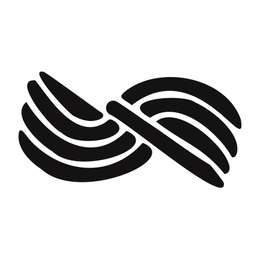Stepping inside the Angler's Club of New York
If you get a chance to visit the Angler's Club in New York City, take it. It's the nucleus of the sport's North American origins.

What's that they say, I'd never join a club that would have me as a member? Not entirely true, of course, I love fly fishing clubs. As a beginner joining a club is the single-biggest thing you can do to speed up your fly-fishing learning curve.
But I had the good luck to be able to attend a small benefit dinner at the exclusive Anglers' Club here in New York City a few weeks back, a place I can confidently say I'll never be a member.
The 106-year-old club, on Broad Street in the financial district, is crammed with history on the sport, counting as members some of its most prolific chroniclers and enthusiasts, as well as those of the finance set who don't fly to Montana commercial.
It's also very subdued in its operation. It doesn't have a website. It doesn't accept applications for membership (you have to be recommended, apparently). It doesn't accept women as members.
The latest info I could find about the place is in this story about the club applying for a liquor license (see a PDF of the community board meeting minutes approving the license here) and a few words with the club's director, Chris Matteson.
Inside the Angler's Club
The club isn't very large inside, just several main rooms, which feel comfy with the embrace of years of history.
The decor is East Coast elite pro, with leather sofas and high-backed reading chairs and plenty of memorabilia, including funny cartoons and illustrations on the walls. It's significantly smaller than any of the other private clubs you'd typically think of, or may have visited, in NYC. The New York Athletic Club, the Friar's Club, Salamagundi, the National Arts Club, the Harvard Club: All are extensive multi-story affairs. The Angler's Club feels more like a clubhouse compared to these, tucked away and comfortable.
When I visited, I was immediately smitten by one major factor: The Angler's Club has got the single-biggest fly fishing library I've seen in one place, bar none. Bookshelves hold volumes as part of its lending library, as well as bookcases dedicated to volumes written by members.
Membership, for me, would probably include cozying up with the club librarian and bolstering its classification system, all while browsing and immersing myself between the covers in a comfortable chair.
Aside from the books, there's not a whole lot. A central part of the main club room functions as a dining area, with service areas and a kitchen attached. It's the stories, not the space.
Showcases hold fly boxes, antique rods and reels, and other ephemera passed down over the ages, and it's all presided over by a chunky Atlantic salmon (respectable, but no monster) mounted above the fireplace, with a mantle full of trophies and awards. Surely each has a great story behind it.
If you get the chance, it's worth a visit. I'd love to see the club open up a bit and share some of its treasure trove with the wider world. If it had a blog delving into various items of its history, it'd be quite interesting.
A few years after my visit, Hurricane Sandy has left much of the New York City area underwater, and the Angler's Club's fate is uncertain. Fraunce's Tavern, on the corner of Broad and Pearl streets, remains closed indefinitely.
I would imagine the Angler's Club, on the second floor, would be better off, but I haven't been able to find any news of the relics inside, and the huge mass of books and papers and interesting lore it holds. Certainly, the old foundation of the building will be put to the test.
Update: It looks like the club is still standing, having held a reception for fly-fishing literary titan Nick Lyons on the publishing of a collection entitled Astream in 2014.
Lyons probably has more responsibility for the books on club shelves than anyone else, having made an indelible mark as a writer, editor, and publisher over much of the last six decades. Take a look inside here:
Related fly fishing club coverage

Key moments in Angler's Club of New York history
There's one very special piece of Anglers' Club-related history I saw that deserves more awareness. Here it is:
This isn't the Angler's Club's first brush with a destructive fate, though. In 1975 the FALN, a terrorist group of Puerto Rican nationalists, attempted to plant a bomb in the tavern. They bombed the Angler's Club instead. Four people eating lunch died in the attack. This article from the Sarasota Herald Tribune has more.

In the rubble of that explosion, later, as club members were picking through, they found a letter to Theodore Gordon (below, full text in the Fly Fisher's Reader, with more at Classic Trout) and accompanying flies in a trash heap, ready to be thrown away. This material is now framed and on display in the club.
The letter is from Frederic Halford, and includes a number of flies used in British trout fishing. Gordon went on to adapt those patterns to the waters around New York, and many of the flies we tie today are based on them.
If this diamond could be rescued and restored, hopefully the same spirit will keep the Angler's Club of New York buoyant through this hard time.
Full text of Frederic Halford's letter to Theodore Gordon
35 Inverness Terrace Hyde Park W February 22, 1890
Dear Sir: You must excuse my delay in replying to your favour of the 15th ult. I can quite imagine that in some parts of your country fish could be taken with dry fly where the more usual sunk fly would be of no avail--my difficulty however as to advising you of patterns likely to be successful is chiefly due to the fact that I have no knowledge of the streams or lakes nor of the genera and species of natural fly prevalent in them--hence I have thought it better to send you a few of the flies I use myself as patterns rather than order here what might prove after all useless to you--knowing your own rivers you can then select the patterns which seem likely and dress them yourself or order in the U.S.--if you prefer to have them dressed here and want my advice as to the best dresser I should recommend you giving your order to Mr. G. Holland--Bridge Street--Salisbury. If you tell him that the patterns were dressed for and by me and give the name he would be able to send you exactly what you wanted--in all case however give him the size of the hook and to assist you in this I have enclosed a set of the original size from 000 to 4. (Edit.--English system.) The shape of the hooks now made by Hutchison are to my mind an improvement on the original one as designed by my friend Mr. Hall--being more hackle only. If you should be unsuccessful with the floating flies or in doubt as to patterns please try and collect a few of the natural insects in sprit and send them to me by post and if I can dress imitations I will--a tube about 3" x 1" corked, quite full of methylated spirit packed with cotton wool in a small block of wood bored out to receive the tube will travel all over the world by post--of course the color does fade to a certain degree even in spirit but from experience I think I could allow for this and possibly even might know the genera and species-- If I can be of any further assistance to you pray write and in any case kindly let me know the result of your experiments-- With kind regards, Yours faithfully FREDERIC M. HALFORD THEODORE GORDON, ESQ.
𓆟 𓆝 𓆟





